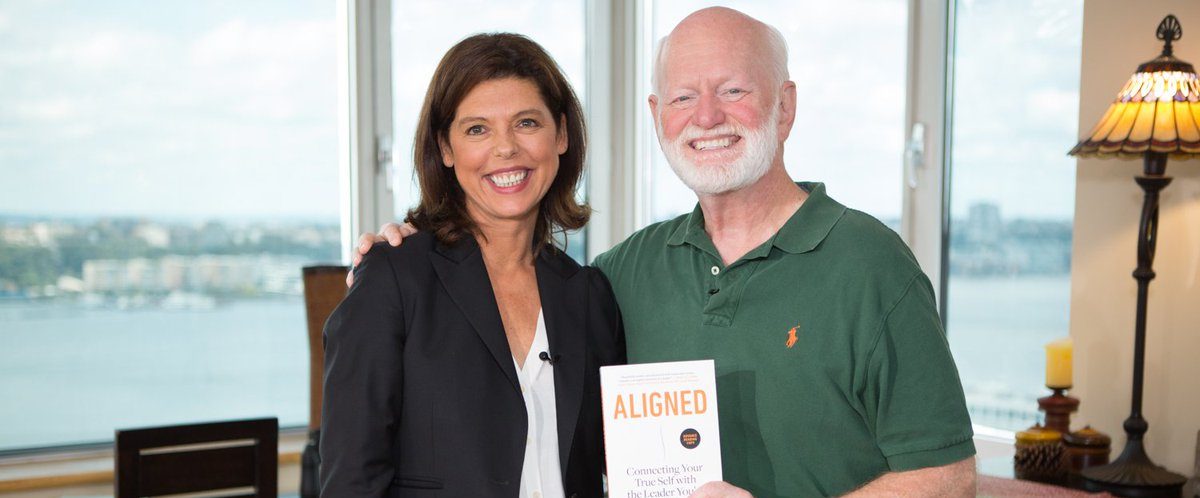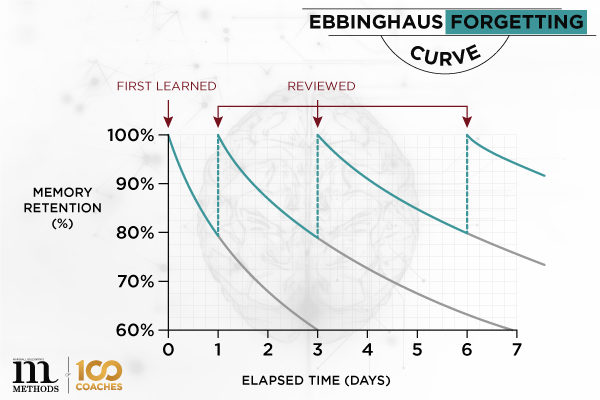Hortense Le Gentil is a highly sought after executive coach and thought leader who’s worked with large corporations and businesses to help them better align their intentions and goals with their actions. Her most critical work has been done around her theories of alignment, and how that can drive us either to success or away from our goals. We had a chance to catch up with her and pick her brain for how to maintain alignment during a crisis.
Q: What are your thoughts on “alignment” throughout the COVID crisis? How could the world (or certain countries, states, towns, etc.) better align themselves with the rest of the world?
A: Being aligned during this crisis is the most crucial step that an individual, organization, or government must take in mounting a successful response. During this pandemic, leaders face an unprecedented set of simultaneous challenges. They have to deal with human, health management, operational, financial, strategic, and public policy challenges for which there is no playbook, and there has been no training.
So how can you, as a leader, become aligned during a time of crisis? Imagine that the entire world is flying on the same plane. We are collectively facing an unprecedented time of turbulence and are in a state of shock. The oxygen masks have fallen. What do you do in this situation? For it is a long run race, not a sprint.
The first step is to hit the pause button. As flight attendants instruct us, we have to put on our oxygen mask first. You need to do this before you can take care of others. What is true on a flight is true now. What does it mean concretely for leaders? Take care of yourself by reflecting. Before taking action in a crisis, a good leader must answer these questions: what are your key values? What drives you? What kind of a leader do you want to be in this crisis? How do you want to be remembered as a leader two years from now?
Establish and follow a daily routine. You need to find what will be right for you. But, in my experience, it may start with a morning meditation, physical exercise, an evening “rendezvous” with yourself, and some appropriate refueling during the day. During your “rendezvous” answer a few daily questions tied to the priorities you have laid out for yourself: did I do my best to listen and demonstrate empathy? Did I do my best to check in with the most vulnerable members of the organization? Did I do my best to communicate with my team with transparency, both what we know and what we do not know? Did I do my best to listen to expert advice? Did I do my best to ask for help?
Do not be afraid to deal with your emotions. You have to deal with pain and suffering. You may have to make incredibly difficult decisions, such as furloughing the majority of your employees. Hiding or burying your emotions will not be a good idea. Doing so, keeping them inside is likely to exhaust you and lead to burnout. It will also hinder your ability to lead in a human, empathetic, and authentic fashion, as the repression of your emotions will prevent you from deeply and genuinely connecting with others around you.
Once leaders align themselves, they can start aligning their organizations.
Q: What are the biggest disruptions occurring within individuals and companies?
A: Besides the world-altering pandemic, the biggest disruption to achieving alignment is hyperactivity. You must take the time to stop and take a step back. To reflect, to check if you are still aligned, to refuel. It is simple to pack your schedule with meeting after meeting. And to fill your head with idea after idea, never stopping to consider which might be worth pursuing and dropping initiatives as quickly as one started them. It is easy to always be rushing and acting before considering what was most important or when action was needed at all. Amid all that inner noise, you can lose touch with yourself and with your intuition. Hyperactivity will limit your effectiveness, since achieving alignment is all about seeing everything clearly.
However, it is difficult to completely unplug from your busy schedule as email and cell phones follow us wherever we go. So how do you reclaim mental space in your daily life? Start by finding ways to refuel. Perhaps it’s taking a break and going to get coffee or taking a walk or listening to music. Taking little breaks like these are known as cerebral downtime, or a mini holiday for the brain. Your energy settles into calm. This downtime pays off: a refreshed brain has been linked to higher attention, motivation, memory, and productivity—all of which feed performance. Find your own way. It is all about being at the present moment and be able to take a step back.
Many tech firms in Silicon Valley have recognized the importance of cerebral downtime, and often start meetings with a few minutes of silence. It gives everyone in the room a chance to clear their heads and focus. But like anything else, the ability to stand in the present at will is a skill that requires practice. Google started nudging its staff to attend mindful meditation training as early as 2007, and the practice has now spread far beyond Silicon Valley to traditional Fortune 500 companies such as Goldman Sachs and General Mills.
Q: What’s an easy, first step towards finding alignment within yourself?
A: The first step to achieving alignment is to clarify who you are, understand the gap between who you are today and who you truly want to be.
Alignment will make it a lot easier to tackle the unavoidable obstacles and challenges that keep cropping up. When aligned with your authentic self, decisions become a lot easier, because the perspective you’ve gained allows you to see better. You’re able to do more, spending less energy; you feel a sense of peace even in tough situations, knowing in your bones that you’re on the right path, confident in your ability to handle everything coming your way. The first questions to ask yourself is how far do you feel from alignment? Where is your own gap, and how wide does it feel?
Self-assessment is the first step that you must take on your journey to alignment. If you do not understand yourself, then no amount of coaching or feedback from colleagues will make a difference.
Q: Why is “alignment” such a big deal today? What other key words can leaders focus on today?
A: The idea of alignment was born before the COVID crisis, but the pandemic has only accelerated the importance of becoming aligned. Change happens ever faster, as before the pandemic. Products and services in all sectors, as well as the way we do business, are undergoing massive disruptions. New generations with different mindsets and priorities enter the workforce and join the ranks of consumers, making their mark on the world and shaping how talent gets managed and markets served. What is true today won’t be true tomorrow. You also keep growing and evolving, always stretching towards new destinations and challenges. You are faced with the choice of striving towards the leader you want to be-always be pushing the goal posts a bit further-or stagnating. More than ever, leaders must be nimble, anticipate changes, adjust, and embrace their responsibilities not only towards people within their organizations but also suppliers, customers, and the communities in which they operate. This requires continuously aligning and realigning with themselves and with the world around them. In order to be successful in tomorrow’s world, leaders have to embrace global thinking and cross-cultural diversity, understand rapidly changing technology and its impact, rely far more on alliances and partnerships than in the past, and be facilitators rather than experts. All of this requires agility, speed, and foresight. In this context, the ability to find and maintain alignment within oneself and with others becomes even more crucial-and also challenging. To stay aligned, you must be unlocked. You have to unlock your true potential as an imperfect, vulnerable, but real, incredibly talented human being.
Q: How can companies still achieve alignment when many employees are working remotely?
A: The most important thing that companies can do to achieve alignment during this unprecedented crisis is to create a safe space for employees. Feeling safe is the most basic human need, and it is being challenged by the pandemic. Therefore, managers must make an effort to communicate with their staff on a daily basis, or at least regularly. It will create a routine that will reassure employees and make them feel like a priority. Another easy way to stay aligned while working remotely is to maintain “eye contact” as much as possible. Companies should use video conferences instead of phone calls as people who are working from home will appreciate a social “working environment”. Moreover, eye contact can help maintain the link between people and create a safe space. Additionally, companies should set up helpline/channels such as Skype or Gmail chats where colleagues can collaborate amongst one another. By creating a safe space for employees, companies can facilitate a collective alignment, or “alignment of alignments,” where employees and the organization are aligned. Furthermore, creating a safe space during a crisis should not be limited to the virtual office. Safe spaces should be applied to families as well, especially ones that are split up due to the pandemic. All of this may help you keep your community connected, aligned and focused.
You can find more information about Hortense on her website, and be sure to check out her upcoming Methods course on Aligned Leadership!
[/vc_column_text][/vc_column][/vc_row]
Hortense Le Gentil is a highly sought after executive coach and thought leader who’s worked with large corporations and businesses to help them better align their intentions and goals with their actions. Her most critical work has been done around her theories of alignment, and how that can drive us either to success or away from our goals. We had a chance to catch up with her and pick her brain for how to maintain alignment during a crisis.
Q: What are your thoughts on “alignment” throughout the COVID crisis? How could the world (or certain countries, states, towns, etc.) better align themselves with the rest of the world?
A: Being aligned during this crisis is the most crucial step that an individual, organization, or government must take in mounting a successful response. During this pandemic, leaders face an unprecedented set of simultaneous challenges. They have to deal with human, health management, operational, financial, strategic, and public policy challenges for which there is no playbook, and there has been no training.
So how can you, as a leader, become aligned during a time of crisis? Imagine that the entire world is flying on the same plane. We are collectively facing an unprecedented time of turbulence and are in a state of shock. The oxygen masks have fallen. What do you do in this situation? For it is a long run race, not a sprint.
The first step is to hit the pause button. As flight attendants instruct us, we have to put on our oxygen mask first. You need to do this before you can take care of others. What is true on a flight is true now. What does it mean concretely for leaders? Take care of yourself by reflecting. Before taking action in a crisis, a good leader must answer these questions: what are your key values? What drives you? What kind of a leader do you want to be in this crisis? How do you want to be remembered as a leader two years from now?
Establish and follow a daily routine. You need to find what will be right for you. But, in my experience, it may start with a morning meditation, physical exercise, an evening “rendezvous” with yourself, and some appropriate refueling during the day. During your “rendezvous” answer a few daily questions tied to the priorities you have laid out for yourself: did I do my best to listen and demonstrate empathy? Did I do my best to check in with the most vulnerable members of the organization? Did I do my best to communicate with my team with transparency, both what we know and what we do not know? Did I do my best to listen to expert advice? Did I do my best to ask for help?
Do not be afraid to deal with your emotions. You have to deal with pain and suffering. You may have to make incredibly difficult decisions, such as furloughing the majority of your employees. Hiding or burying your emotions will not be a good idea. Doing so, keeping them inside is likely to exhaust you and lead to burnout. It will also hinder your ability to lead in a human, empathetic, and authentic fashion, as the repression of your emotions will prevent you from deeply and genuinely connecting with others around you.
Once leaders align themselves, they can start aligning their organizations.
Q: What are the biggest disruptions occurring within individuals and companies?
A: Besides the world-altering pandemic, the biggest disruption to achieving alignment is hyperactivity. You must take the time to stop and take a step back. To reflect, to check if you are still aligned, to refuel. It is simple to pack your schedule with meeting after meeting. And to fill your head with idea after idea, never stopping to consider which might be worth pursuing and dropping initiatives as quickly as one started them. It is easy to always be rushing and acting before considering what was most important or when action was needed at all. Amid all that inner noise, you can lose touch with yourself and with your intuition. Hyperactivity will limit your effectiveness, since achieving alignment is all about seeing everything clearly.
However, it is difficult to completely unplug from your busy schedule as email and cell phones follow us wherever we go. So how do you reclaim mental space in your daily life? Start by finding ways to refuel. Perhaps it’s taking a break and going to get coffee or taking a walk or listening to music. Taking little breaks like these are known as cerebral downtime, or a mini holiday for the brain. Your energy settles into calm. This downtime pays off: a refreshed brain has been linked to higher attention, motivation, memory, and productivity—all of which feed performance. Find your own way. It is all about being at the present moment and be able to take a step back.
Many tech firms in Silicon Valley have recognized the importance of cerebral downtime, and often start meetings with a few minutes of silence. It gives everyone in the room a chance to clear their heads and focus. But like anything else, the ability to stand in the present at will is a skill that requires practice. Google started nudging its staff to attend mindful meditation training as early as 2007, and the practice has now spread far beyond Silicon Valley to traditional Fortune 500 companies such as Goldman Sachs and General Mills.
Q: What’s an easy, first step towards finding alignment within yourself?
A: The first step to achieving alignment is to clarify who you are, understand the gap between who you are today and who you truly want to be.
Alignment will make it a lot easier to tackle the unavoidable obstacles and challenges that keep cropping up. When aligned with your authentic self, decisions become a lot easier, because the perspective you’ve gained allows you to see better. You’re able to do more, spending less energy; you feel a sense of peace even in tough situations, knowing in your bones that you’re on the right path, confident in your ability to handle everything coming your way. The first questions to ask yourself is how far do you feel from alignment? Where is your own gap, and how wide does it feel?
Self-assessment is the first step that you must take on your journey to alignment. If you do not understand yourself, then no amount of coaching or feedback from colleagues will make a difference.
Q: Why is “alignment” such a big deal today? What other key words can leaders focus on today?
A: The idea of alignment was born before the COVID crisis, but the pandemic has only accelerated the importance of becoming aligned. Change happens ever faster, as before the pandemic. Products and services in all sectors, as well as the way we do business, are undergoing massive disruptions. New generations with different mindsets and priorities enter the workforce and join the ranks of consumers, making their mark on the world and shaping how talent gets managed and markets served. What is true today won’t be true tomorrow. You also keep growing and evolving, always stretching towards new destinations and challenges. You are faced with the choice of striving towards the leader you want to be-always be pushing the goal posts a bit further-or stagnating. More than ever, leaders must be nimble, anticipate changes, adjust, and embrace their responsibilities not only towards people within their organizations but also suppliers, customers, and the communities in which they operate. This requires continuously aligning and realigning with themselves and with the world around them. In order to be successful in tomorrow’s world, leaders have to embrace global thinking and cross-cultural diversity, understand rapidly changing technology and its impact, rely far more on alliances and partnerships than in the past, and be facilitators rather than experts. All of this requires agility, speed, and foresight. In this context, the ability to find and maintain alignment within oneself and with others becomes even more crucial-and also challenging. To stay aligned, you must be unlocked. You have to unlock your true potential as an imperfect, vulnerable, but real, incredibly talented human being.
Q: How can companies still achieve alignment when many employees are working remotely?
A: The most important thing that companies can do to achieve alignment during this unprecedented crisis is to create a safe space for employees. Feeling safe is the most basic human need, and it is being challenged by the pandemic. Therefore, managers must make an effort to communicate with their staff on a daily basis, or at least regularly. It will create a routine that will reassure employees and make them feel like a priority. Another easy way to stay aligned while working remotely is to maintain “eye contact” as much as possible. Companies should use video conferences instead of phone calls as people who are working from home will appreciate a social “working environment”. Moreover, eye contact can help maintain the link between people and create a safe space. Additionally, companies should set up helpline/channels such as Skype or Gmail chats where colleagues can collaborate amongst one another. By creating a safe space for employees, companies can facilitate a collective alignment, or “alignment of alignments,” where employees and the organization are aligned. Furthermore, creating a safe space during a crisis should not be limited to the virtual office. Safe spaces should be applied to families as well, especially ones that are split up due to the pandemic. All of this may help you keep your community connected, aligned and focused.
You can find more information about Hortense on her website, and be sure to check out her upcoming Methods course on Aligned Leadership!





